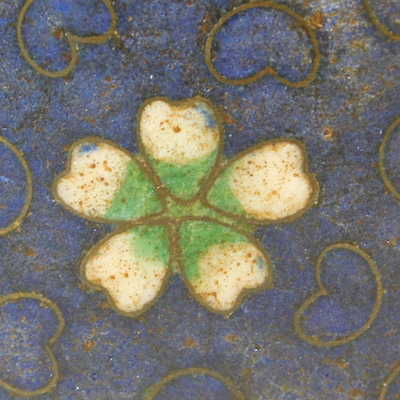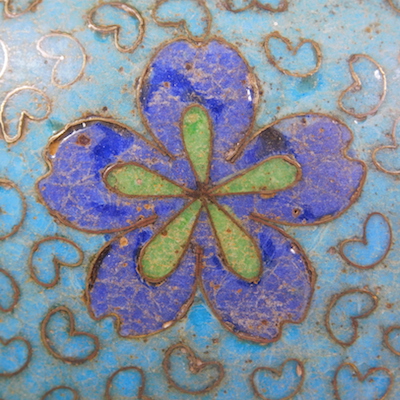This attractive little jar has the same Kinkozan workshop mark 錦光山 seen earlier on object 52. It is a lovely example of early Japanese cloisonne on a ceramic base. Cloisonne using a pottery base is known as ‘totai shippo’. In character form this is 陶胎七宝 ( 陶胎 or トウタイ “toutai” means pottery base).
This jar still has the lid which shows how important that was to the overall design. For example, the “oval square” pattern at the neck is designed to match, with half of the design being on the lid and half on the main body. The abstract design on the top of the lid is also a very strong feature.
It is interesting to compare the 錦光山 Kinkozan mark on this jar and object 52, which seems likely to have been made earlier (see below). It doesn’t look as if either has been applied with great care.
The two designs in the main windows are much more developed than on the earlier jar (object 52). There is also now a bird and a butterfly. In addition to the much more developed wiring design the colours are also much brighter, not least the attractive red and yellow on image ref 69.5 below.
Looking at the five petal flower designs on this object, object 52 and object 61 is interesting (object 61 was identified as being likely from the Kinkozan workshop but not marked). Again object 52 seems to be probably the earliest made because of the simplicity of the design and the density of the surrounding strength wiring (the ‘lobed half moon’ or ‘bean’ shapes).
As more marked items are covered here it shoud be possible to establish more ideas of relative date order.
Object 69. Jar height 12.2 cm weight 335 gm.
_ _ _ _ _ _ _ _ _ _ _










